Estás considerando los e-tuk tuks para tu negocio, pero te preocupa que sean demasiado lentos para el tráfico real. Elegir un modelo con una velocidad máxima incorrecta puede hacer que su servicio sea ineficiente o inseguro.
La velocidad máxima de un tuk-tuk eléctrico de pasajeros suele oscilar entre 45 y 55 km/h. Sin embargo, esto varía mucho según el motor, el sistema de batería y el uso previsto: algunos modelos están diseñados para 25 km/h y otros alcanzan los 60 km/h.
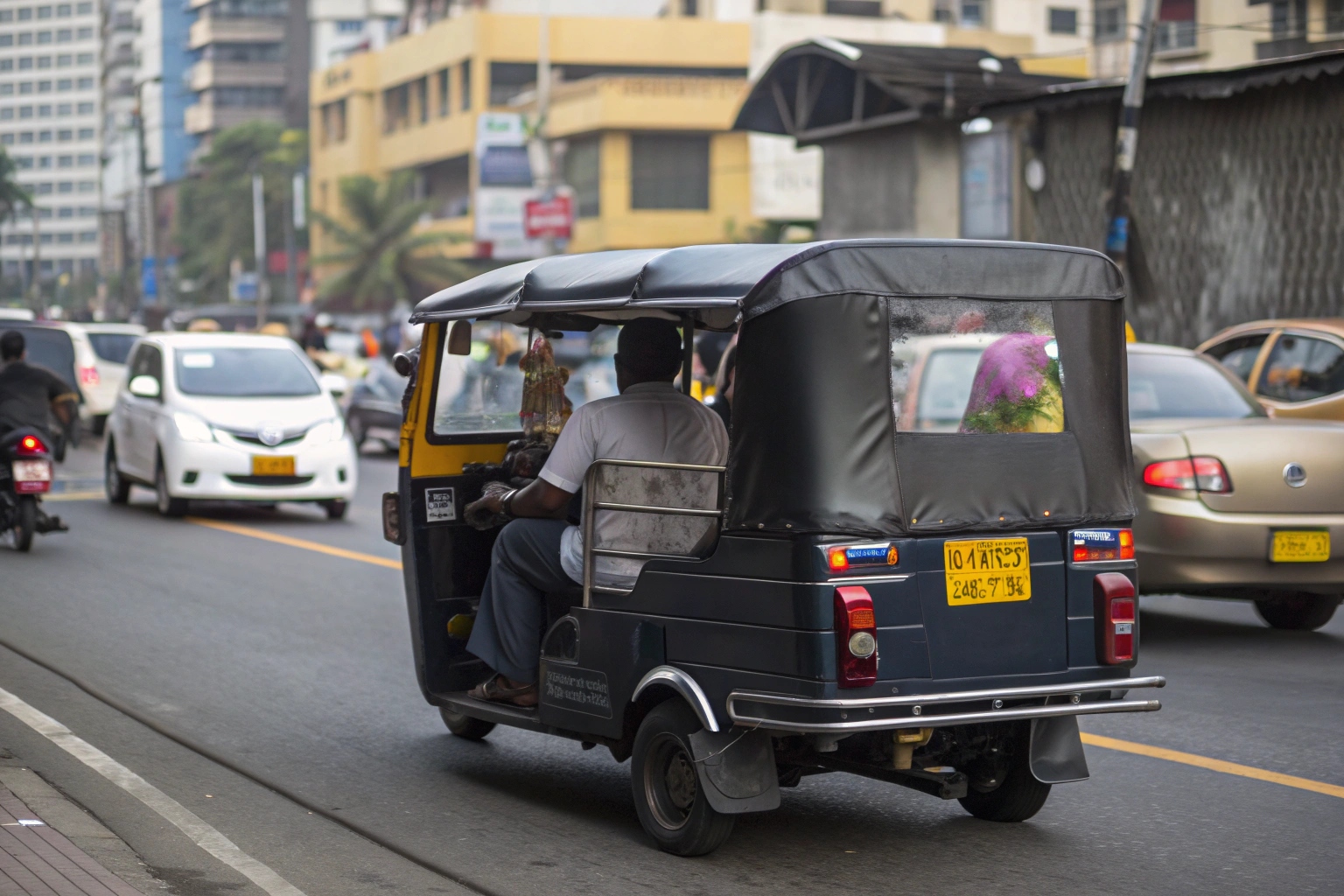
Una de las preguntas más comunes que hacen mis clientes es sobre la velocidad. Es un factor crítico que impacta directamente en la utilidad de un tuk-tuk. Un operador de taxi en una concurrida ciudad latinoamericana necesita mantenerse al día con el tráfico, mientras que el servicio de transporte de un hotel en una isla tranquila tiene prioridades completamente diferentes. Como fábrica, no sólo fabricamos vehículos de talla única. Configuramos el velocidad y potencia to match the job. The "top speed" en una hoja de especificaciones es solo el comienzo de la historia. Veamos qué significa realmente ese número y qué puede esperar en el mundo real.
¿Cuál es la velocidad máxima típica de un tuk tuk eléctrico de pasajeros?
Puedes ver diferentes índices de velocidad en línea, desde lento hasta sorprendentemente rápido. Esto dificulta comparar modelos y saber qué esperar de sus operaciones comerciales.
Un tuk-tuk eléctrico estándar para uso en taxi suele tener una velocidad de entre 45 km/h y 55 km/h. Los e-rickshaws más ligeros y básicos para rutas cortas son más lentos, alrededor de 25 km/h, mientras que los modelos de mayor rendimiento pueden alcanzar 60 km/h para rutas más exigentes.
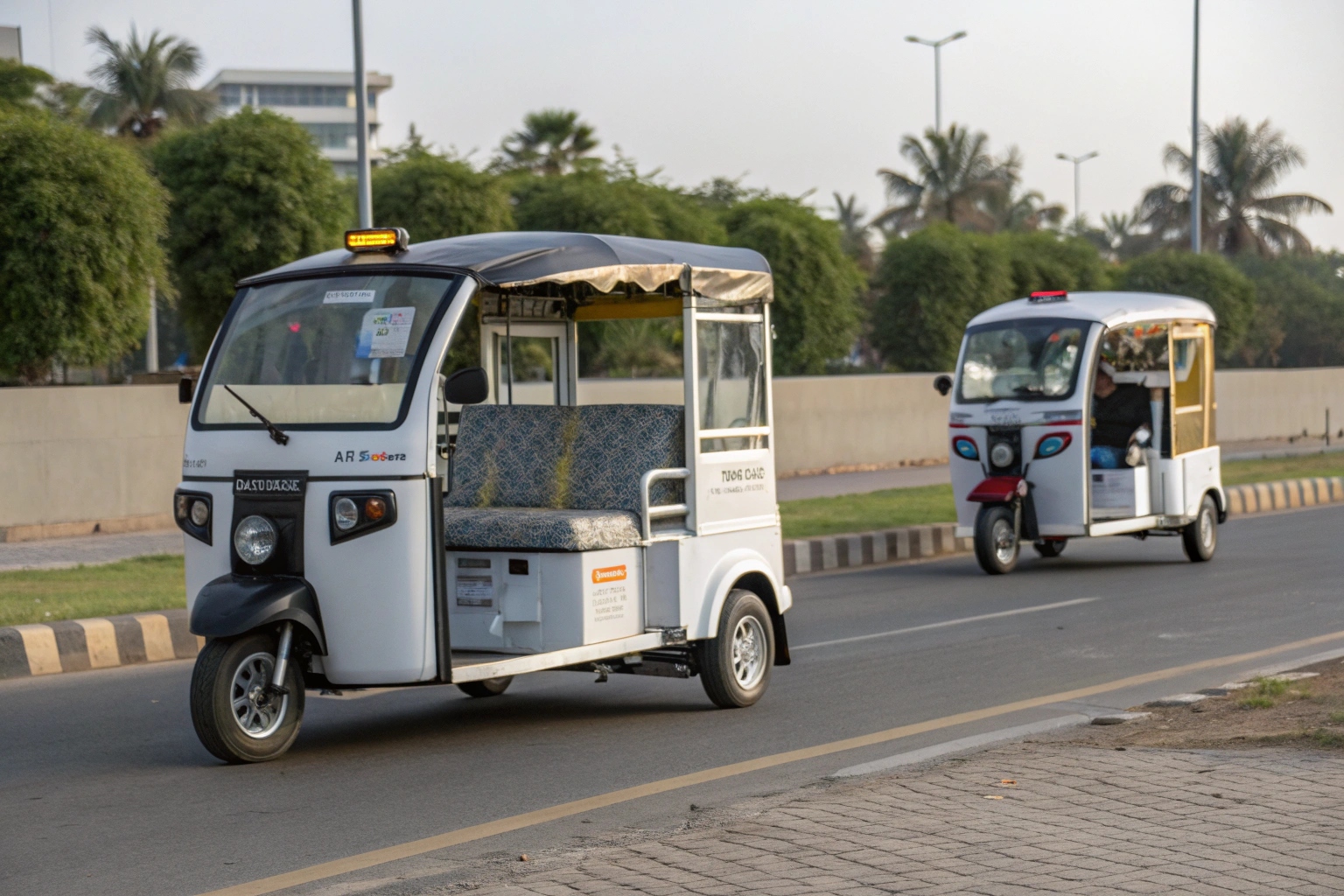
When we classify speed at the factory, we think in terms of use cases. There isn't just one "typical" velocidad, sino niveles diferentes para diferentes trabajos. Para los clientes que establecen flotas de taxis en mercados como el Sudeste Asiático o África, una velocidad máxima de 50-55 km/h es esencial. Esto permite que el tuk-tuk se integre fluidamente en el tráfico urbano sin provocar retrasos. Es lo suficientemente rápido para las carreteras principales, pero sigue siendo seguro dado el diseño abierto del vehículo.
Por otro lado, una gran parte del mercado, especialmente en India y Bangladesh, utiliza lo que se llama "rickshaws." Se trata de vehículos más ligeros con motores más pequeños y su velocidad máxima suele estar limitada a 25 km/h. Están diseñados para una conectividad corta y de última milla en áreas muy densas. Una tercera categoría es para clientes específicos que necesitan más, por ejemplo, un servicio de transporte entre una ciudad y un aeropuerto cercano. Para ellos, podemos construir modelos de mayor especificación que pueden alcanzar los 60 km/h.
Aquí hay una guía simple que uso con mis clientes:
| Tipo de vehículo | Velocidad máxima típica | Mejor para |
|---|---|---|
| E-Rickshaw | 20-25 kilómetros por hora | Transporte local de barrio, tráfico denso. |
| Tuk Tuk eléctrico estándar | 45-55 kilómetros por hora | Servicios de taxi urbano, transporte público en general. |
| Traslado al centro vacacional/campus | 25-35 kilómetros por hora | Entornos controlados, enfoque en la seguridad de los pasajeros |
| Alto rendimiento | 55-60 kilómetros por hora | Rutas suburbanas, compitiendo con los taxis. |
Comprender estos niveles le ayudará a seleccionar un vehículo diseñado para sus necesidades operativas específicas.
¿Qué factores técnicos influyen en la velocidad máxima del tuk tuk?
Se podría pensar que un motor más grande es lo único que hace que un tuk-tuk sea más rápido. Pero si otras piezas no coinciden correctamente, sólo estás pagando por energía que no puedes utilizar.
La velocidad máxima está determinada principalmente por la potencia del motor (kW), la configuración del controlador electrónico y la relación de transmisión final. El voltaje de la batería también juega un papel clave, ya que un sistema de mayor voltaje entrega energía de manera más eficiente para velocidades más altas.
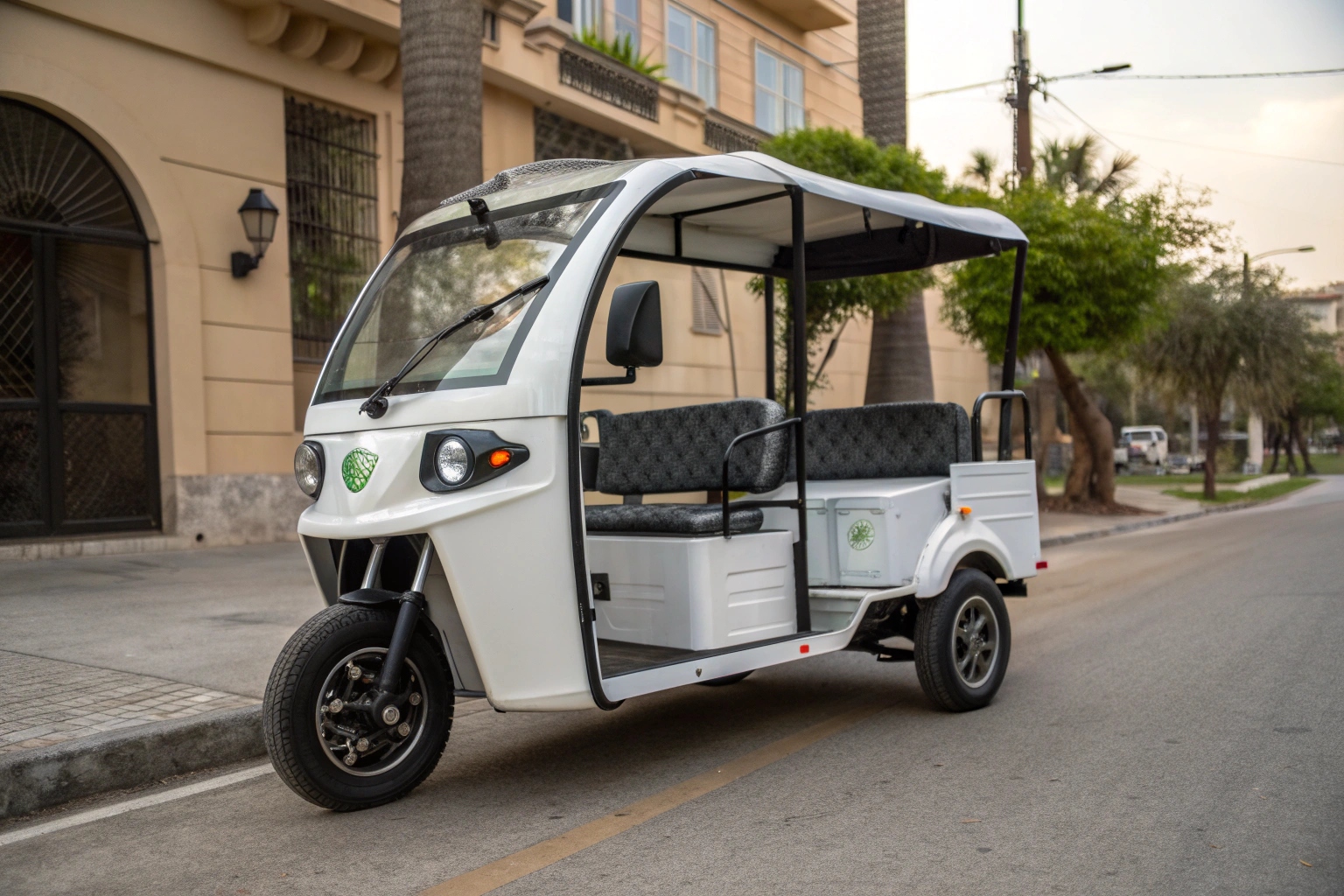
Desde una perspectiva de ingeniería, lograr una velocidad máxima específica es un acto de equilibrio. No se trata de un solo componente, sino de cómo funciona todo el tren motriz en conjunto. Cuando un cliente solicita una determinada velocidad máxima, mi equipo analiza estos factores clave:
-
Potencia del motor: Ésta es la base. Un simple motor de 1,5 kW podría ser suficiente para un e-rickshaw de 25 km/h. Pero para alcanzar de forma fiable los 55 km/h con pasajeros, se necesita un motor más potente, normalmente en el rango de 3kW a 4kW. Más potencia proporciona el par necesario para alcanzar y mantener velocidades más altas.
-
Controlador: Este es el cerebro del vehículo. El controlador regula la cantidad de energía que fluye desde la batería al motor. Incluso con un motor potente, podemos programar el controlador para limitar la velocidad máxima. Hacemos esto a menudo para traslados a centros turísticos o campus donde la seguridad es la principal preocupación, limitando la velocidad a 30 km/h.
-
Relación de engranajes: The differential, or rear axle, has a specific gear ratio. A "high-speed" La relación permite que las ruedas giren más rápido para unas RPM del motor determinadas, lo que da como resultado una velocidad máxima más alta. La desventaja es que podría ofrecer menos torque a bajas revoluciones al subir colinas empinadas. Discutimos esta compensación con los clientes para adaptarla a su terreno local.
Un vehículo con un motor potente pero con un controlador y una relación de transmisión diseñados para bajas velocidades nunca será rápido. Como fábrica, nuestro trabajo es diseñar un sistema equilibrado en el que todas estas piezas funcionen en armonía para ofrecer el rendimiento por el que usted pagó.
¿Cómo afectan las condiciones de la carretera y la carga de pasajeros a la velocidad en el mundo real?
El folleto prometía una velocidad máxima de 55 km/h, pero los conductores se quejan de que no pueden acercarse a esa velocidad. Esta brecha entre la velocidad anunciada y el rendimiento en el mundo real es frustrante y afecta a los negocios.
Un e-tuk tuk completamente cargado puede perder hasta un 20% de su velocidad máxima. Factores del mundo real como colinas pronunciadas, superficies de carreteras en mal estado e incluso una carga baja de la batería también reducirán significativamente la velocidad máxima alcanzable.
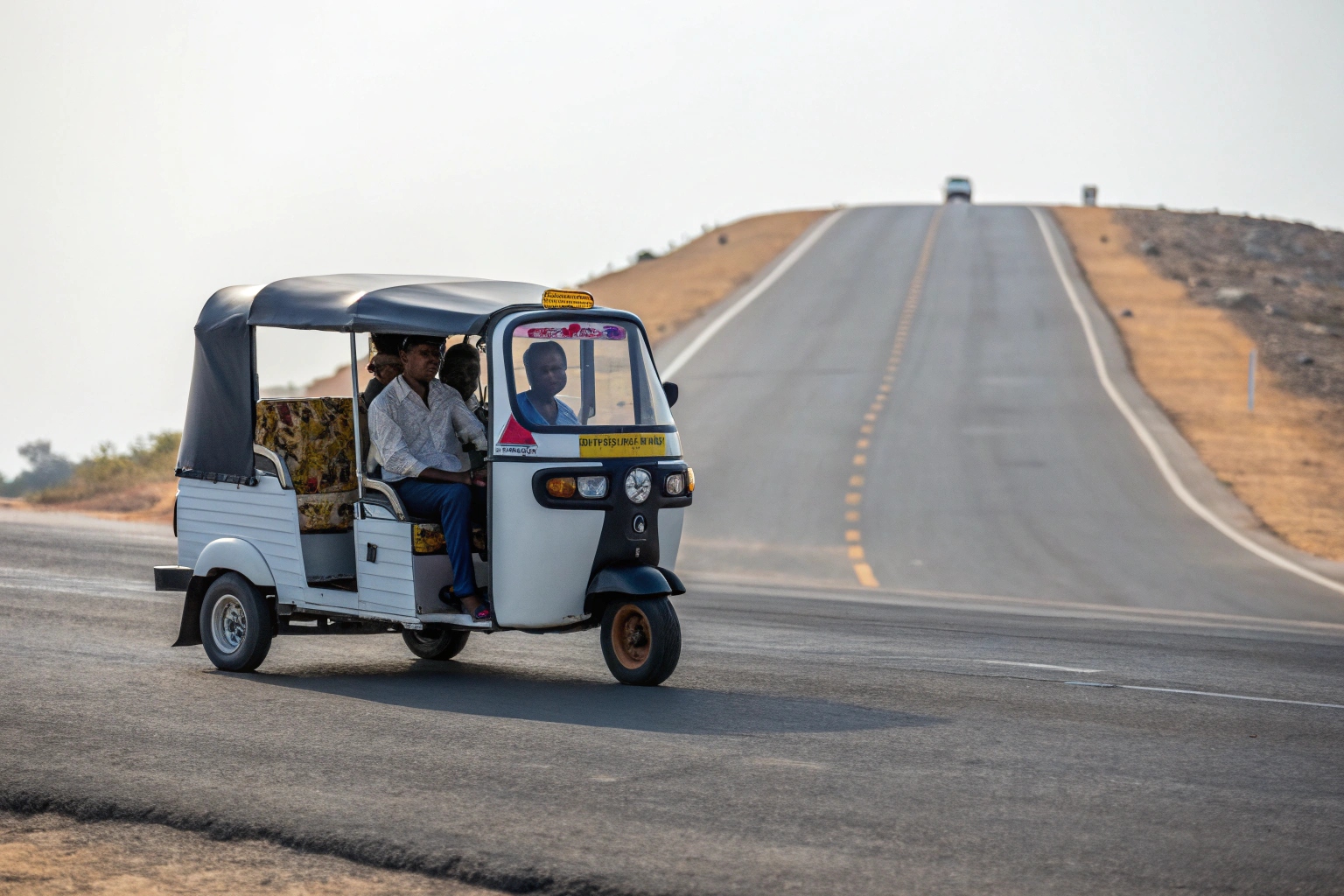
La velocidad máxima que enumeramos es una medida tomada en condiciones ideales: un solo conductor, una batería llena y una carretera plana y suave. En sus operaciones diarias, las cosas rara vez son ideales. Siempre les digo a mis clientes que esperen que el desempeño en el mundo real sea diferente. El peso es el factor más importante. Por cada pasajero que agregas, el motor tiene que trabajar más. Hemos visto en nuestras pruebas que una carga completa de tres pasajeros y un conductor puede reducir la velocidad máxima efectiva entre un 15 y un 20 %. Un vehículo que alcanza los 50 km/h con solo un conductor puede alcanzar entre 40 y 42 km/h cuando está lleno.
El terreno es igualmente importante. Trabajé con un cliente que lanzaba una flota en una región montañosa de Uganda. En los tramos llanos, los tuk-tuks se comportaron perfectamente. Pero en pendientes pronunciadas, la velocidad naturalmente disminuiría, una simple cuestión de física. El estado de carga de la batería también influye. Cuando la batería está por debajo del 20%, el sistema de administración de batería (BMS) puede reducir la producción de energía para proteger las celdas, lo que puede reducir su velocidad máxima entre un 10 y un 15%. Es una característica de seguridad incorporada. Pensando en estos mundos reales "asesinos de velocidad" le ayuda a establecer expectativas realistas en cuanto a tiempos y horarios de viaje.
¿Qué regulaciones limitan la velocidad de los Tuk Tuks eléctricos de pasajeros?
Quiere importar el modelo más rápido disponible para seguir siendo competitivo. Pero le preocupan los problemas legales y el riesgo de que su envío se quede atascado en la aduana es alto.
Las regulaciones suelen dictar una velocidad máxima legal. En la Unión Europea, por ejemplo, los triciclos eléctricos de la categoría L5e están legalmente limitados a 45 km/h. Los importadores deben consultar las normas nacionales y locales antes de realizar el pedido.
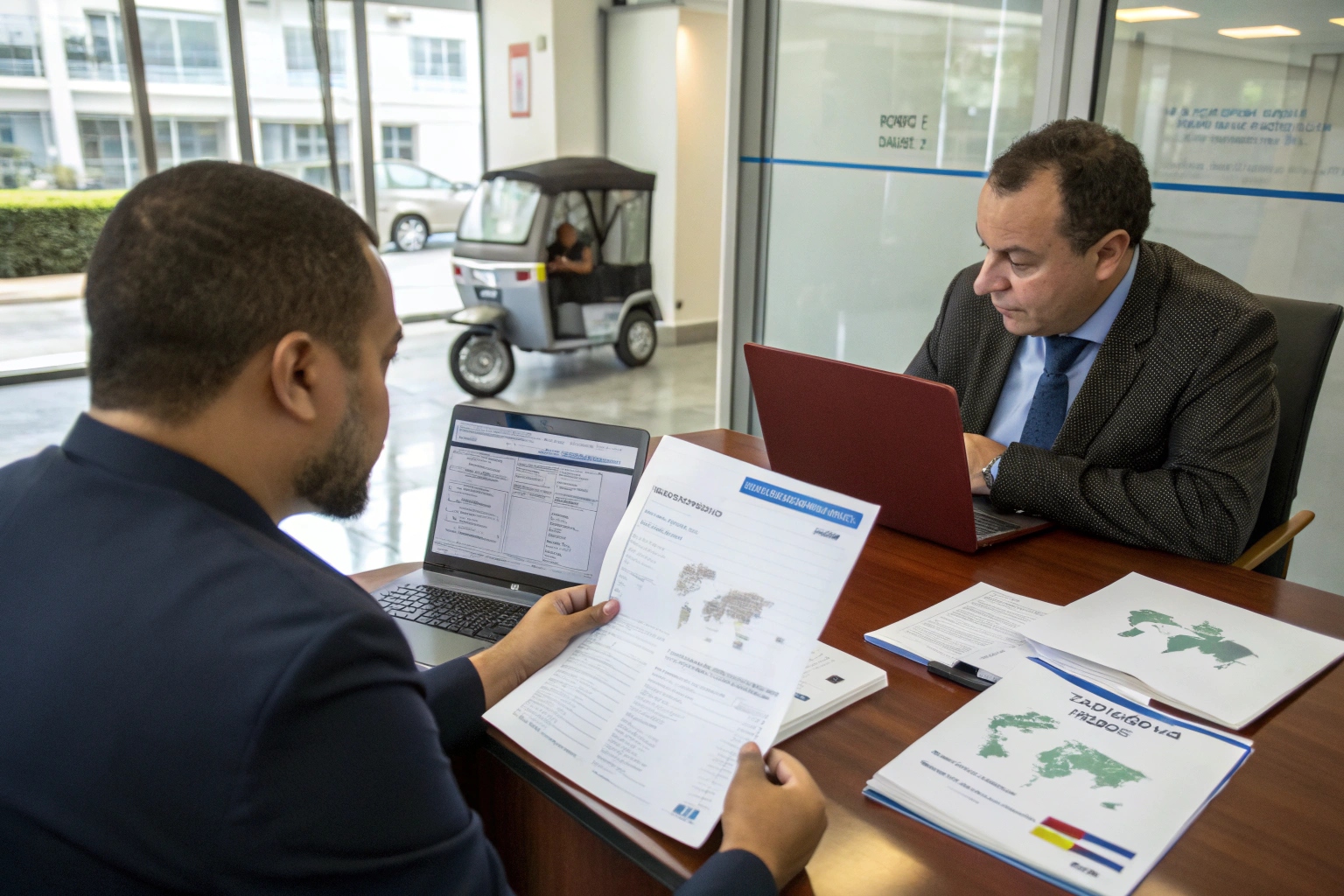
Esta es una de las conversaciones más importantes que tengo con los nuevos importadores. No puedes simplemente elegir una velocidad; hay que cumplir con la ley. Estas regulaciones varían mucho de un país a otro. El ejemplo más conocido son las normas sobre vehículos de categoría L de la Unión Europea. Para que cualquier triciclo eléctrico sea legal para circular en la UE, debe cumplir con la clasificación L5e, que incluye un límite de velocidad no modificable de 45 km/h. Para todos mis clientes europeos, programamos este límite directamente en el controlador de fábrica.
In many other parts of the world, like Africa and Latin America, the rules can be less specific. There might not be a national law for tuk-tuk speed, so they just have to follow the general road speed limits. However, this is changing quickly. More cities are introducing their own local rules. For instance, a tourist hotspot might create a "low-speed zone" donde todos los tuk-tuks están limitados a 30 km/h para la seguridad de los peatones. Como exportador, es mi responsabilidad preguntarle a usted, el importador, sobre estas reglas. Garantizar que el vehículo cumple antes sale de mi fábrica le ahorra enormes dolores de cabeza y posibles pérdidas financieras más adelante.
Conclusión
La velocidad máxima de un tuk-tuk eléctrico es una especificación flexible, que oscila entre 25 y 60 km/h. Está determinado por su motor, uso previsto, carga de pasajeros y regulaciones locales cruciales.

